
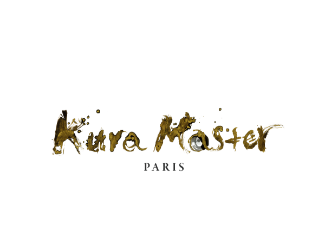
Chef-Sommelier Xavier Thuizat on the brilliance of Amami Kokuto Shochu
Xavier Thuizat is the Chef-Sommelier (Head Sommelier) of the prestigious and storied Hôtel de Crillon in Paris. He is also the Chief Juror of the Kura Master Competition that French sommeliers begun in France in 2017 to educate the European market on Japanese sake. His recent interest is Honkaku Shochu, Japan's other "National Drink" that encapsulates each region's history and environment, and has a broad range of rich flavors and variations. He believes in the potential of Honkaku Shochu and is very involved in popularizing it. We asked him to try 7 Amami Kokuto Shochu brands.
Amami Kokuto Shochu’s Global Potential
Honkaku Shochu is in an exclusive position between brewed and distilled drinks
“First and foremost, I want to make it abundantly clear that Japanese Honkaku Shochus are fundamentally different from the distilled drinks in Europe and America. Distilled drinks in the west are distilled several times, but Honkaku Shochu and one of its types, Amami Kokuto Shochu, are distilled only once (pot distillation). That is how the tastes from raw materials and the production process which are similar to those for brewed, fermented drinks are retained and re-emerge as each brand’s unique flavors and scents. So, for me, Honkaku Shochu and Amami Kokuto Shochu are exceptional drinks that have the best qualities of both brewed and distilled liquors, rather than a conventional distilled liquor.”
Amami Kokuto Shochu as a drink to dine with
“Because Honkaku Shochu has the qualities of brewed fermented drinks such as wine, beer, or sake, restaurants can proudly serve them to accompany meals. With Amami Kokuto Shochu, the hard work each distillery puts into the production result in unique flavors and aromas that are a combination of the characteristics of rice malt and brown sugar. I had the honor of trying 7 types of Amami Kokuto Shochu, and all of them were quite interesting and of excellent quality.”
“People often imagine having ‘distilled’ drinks with something such as soda or ice, but when you’re having an Amami Kokuto Shochu, I would suggest trying it neat as you would a brewed drink like wine. Of course, the originality of Amami Kokuto Shochu can inspire bartenders to create cocktails and explore new universes in a glass. If positioning Amami Kokuto Shochu as a ‘contemporary distilled drink’ allows them to do so, that is a splendid twist.”
“As a sommelier, however, I believe the characteristics that each distiller is rightly so proud of can be most appreciated when it is served straight, as brewed drinks are in western restaurants.”
Xavier Thuizat's Tasting Notes
Lento 25% ABV

|
Distillery |
Amami Oshima Kaiun Shuzo Co., Ltd. |
|---|---|
| Production Method & Uniqueness | Vacuum distillation, white koji Classic symphonies are played to vibrate the storage tanks that hold Lento. The fine vibrations are a part of the maturing process, called “acoustic aging.” |
|
Appearance |
Clear, silver glow, reflections |
|
Aroma |
Delicate, elegant, exotic, fruity, pineapples and mangoes, vegetable scents after airing, fresh, not alcoholic |
| Palate | Fresh, minerals such as calcium or seashells, dewy, vanilla scent in the middle. Finishing scents are delicate, fresh with a lasting flavor. |
| Serving Suggestions | At quality establishments, sophisticated Lento is served in a wine glass at 12 ℃ and served with ripe pineapples and desserts, under a summertime image. The bright blue bottle hints the mineral flavors, while the soft hiraganagraphic of the brand name fits with the light touch of the shochu. |
| Pairing Suggestions |
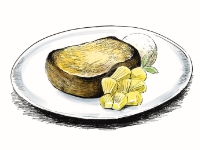 French toast with very ripe pineapples
|
Inenotsuyu 30% ABV
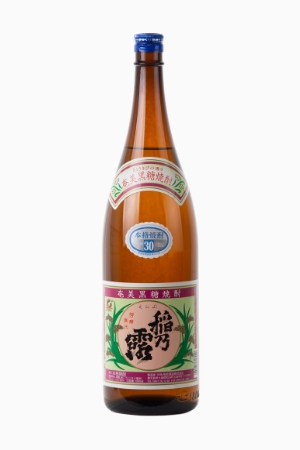
| Distillery | Okinoerabu-shuzo. Co., Ltd. |
|---|---|
| Production Method & Uniqueness | Atmospheric distillation, white koji The flagship brand of this distillery, Inenotsuyu has a rich aroma, smooth taste, and a thickness that is not too sweet. The flavor lasts, enough to enjoy the quietly receding aroma. |
| Appearance | Clear, silver glow, elegant |
| Aroma | The aromas exceed expectations from how this shochu appears. It presents spice flavors such as pepper, as well as yellow fruits such as bananas and peaches. Complex flavors with a nuance of soil. The 30% strength is unobtrusive. |
| Palate | Strong, powerful flavors; obvious brown sugar tastes; unique and strong; after a certain time, the scent of smoking wood rises. It tastes like colored, aged shochu (when tasted with eyes closed). Has nuances of rum from Martinique. |
| Serving Suggestions | Consider it as a digestif and pair it with a slice of baba au rhum. Presenting this as the “Rum of Japan” will offer pleasant discoveries. |
| Pairing Suggestions |
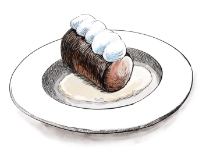 Baba au Rhum
|
Ruri-ironosora 30% ABV
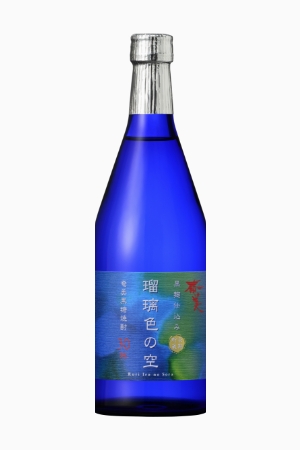
| Distillery | Amami Shurui |
|---|---|
| Production Method & Uniqueness | Atmospheric distillation, black koji Ruri-ironosora blends unprocessed kokuto shochu from 5 distilleries in Tokunoshima, one of the southern islands within the Amami archipelago. |
| Appearance | Clear, reflects light, bright. |
| Aroma | Has hints of the ocean from the scent of iodine, as well as spices, subdued scents of brown sugar, and nuances of plants. Very delicate. |
| Palate | At first, it is fresh with minerals, and elegant. The power follows, then finishing with a salty taste, triggering an appetite. |
| Serving Suggestions | The salinity makes this a nice aperitif. Chill to about 8-10 ℃, serve straight up, paired with blini canapés topped with 1 cm thick slice of smoked salmon. |
| Pairing Suggestions |
 Smoked Salmon Blini Canapés |
Hamachidorinouta Genshu 38% ABV
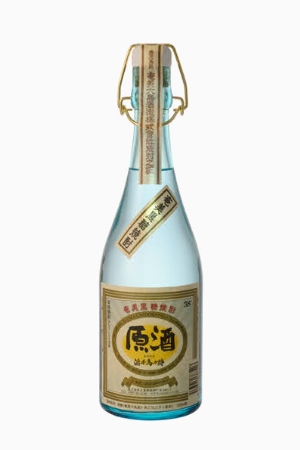
| Distillery | Amami Oshima Shuzo Co., Ltd. |
|---|---|
| Production Method & Uniqueness | Atmospheric distillation, white koji Water is sourced from a natural underground water source in the mountains of Tatsugouchou, called “Jougo No Mizu,” known as the most delicious water source in Amami Oshima. It is an unprocessed-type shochu that is not diluted by a single drop of water and is stored for over 7 years in tanks to mature. |
| Appearance | It has a thickish texture that leaves trails as it trickles down the side of the glass |
| Aroma | Masculine; scents of moist forests and soil; substantial fragrances like black pepper; once aired, it exudes a vanilla scent |
| Palate | A powerful appeal; concentrated flavors; brown sugar, but somehow also caramel flavors; a surprisingly fresh finish |
| Serving Suggestions | Use this instead of cachaca to make a caipirinha cocktail, for an interesting twist when serving in bars. Similarly, the standard mojito is rum-based, but switching to this type of kokuto shochu can be eye opening Serve with jamón ibérico de bellota ham. |
| Pairing Suggestions |
 Caipirinha 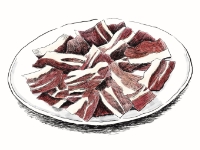 Jamón Ibérico De Bellota |
He-izurushimano Se 2003 43% ABV

| Distillery | Kokuto Shochu Asahi Distillery Co., Ltd. |
|---|---|
| Production Method & Uniqueness | Atmospheric distillation, white koji This is a matured unprocessed shochu, made with pure brown sugar produced in-house, made from organically grown sugar canes from their own fields. It is a vintage shochu that only uses brown sugar processed that year. The diverse flavors according to the year they were made, with the complex aroma of brown sugar and lingering flavors make this an enjoyable mature shochu. |
| Appearance | Concentrated; weighty; oils; thickness; |
| Aroma | Five different flavors come rushing in: 1) exotic and fruity, 2) oils, 3) roasted grains, 4) animal skin or roasted game and 5) mushroom when aired. |
| Palate | One can enjoy strong, powerful flavors; brown sugar; the essence of alcohol; roasted black sesame, all the fun of distilled drinks, making this a good fit for experienced distilled drink lovers. It also has the nuances of a “resident yeast,” the natural yeast that thrives in each distillery. |
| Serving Suggestions | This shochu goes well with bitter-type chocolates and cacao flavors. It also hints of soil. Serve at a relatively tepid 17 to 18 ℃ as a drink for winter, accompanied by the story of how sugar canes are harvested and processed in the winter. |
| Pairing Suggestions |
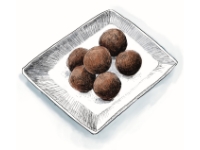 Mocha Truffles |
Yayoi 40% ABV
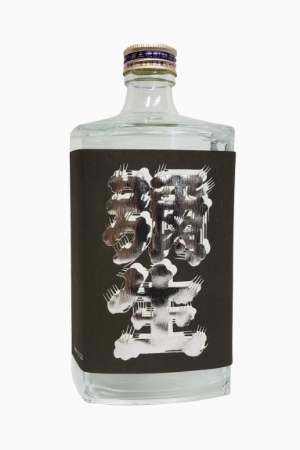
| Distillery | Yayoi Shochu Brewery LPC |
|---|---|
| Production Method & Uniqueness | Atmospheric distillation, white koji This is exclusively made for international sales and is not sold in Japan. It is gentle but powerful and aromatic. High-quality brown sugar from Okinawa is used, and lipids from rice malt bring out the umami flavors. |
| Appearance | Clear, reflects light, bright. |
| Aroma | Fresh and elegant aroma; tastes like springtime, eclipsing the strong alcohol level; images of white flowers such as acacia; fresh greenery; nuances of vegetables; hints of the ocean from the scent of iodine; spices; brown sugar scents are subdued; very delicate, pure. |
| Palate | Compared to the aroma, the flavors are clear and integrated. Strong brown sugar tastes at the end, well balanced. |
| Serving Suggestions | In restaurants, serve chilled (10-12 ℃) alongside carpaccio of freshwater prawns and caviar, or squid sashimi. As flavors of chewed foods spread sideways, the crisp taste of this shochu cuts through vertically, and the combined effect broadens the experience. This shochu also has high potential as a cocktail base, because the substantial aftertaste presents an interesting challenge to the creativity of bartenders. |
| Pairing Suggestions |
 Carpaccio of freshwater prawns and caviar |
Sato No Akebono Gold (‘Nankai Gold’ in the US) 43% ABV

| Distillery | Machida Shuzo Co., Ltd. |
|---|---|
| Production Method & Uniqueness | Blend of vacuum and atmospheric distillation, white koji The matured shochu brand Sato no Akebono (vacuum distillation) and another shochu made by atmospheric distillation are each matured in oak barrels separately, then exquisitely blended. |
| Appearance | A beautiful yellow-gold glow. |
| Aroma | Delicate, grains such as barley; bourbon barrels; vanilla fragrances; scents that Europeans are used to; a freshness that eclipses the 43% ABV. |
| Palate | Tastes of vanilla; rich; cream; confectionery-like sweetness; clear aftertaste |
| Serving Suggestions |
A full bodied immersion, understanding the story of this shochu and its universe, cradled in a couch at a cigar bar with a Cuban Hoyo de Monterrey in your hands. Also works well with cheeses such as Roquefort. |
| Pairing Suggestions |
 Hoyo de Monterrey 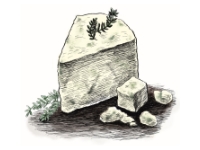 Roquefort |

